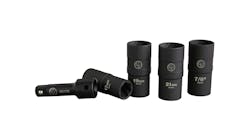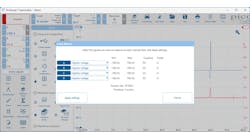Oftentimes, company-owned vehicles are driven “harder” and treated more carelessly than driver-owned or driver-leased vehicles. This can include highly repetitive use of brakes, as well as aggressive driving and unnecessarily riding the brake pedal during driving.
In some vehicle applications, due to certain driving conditions, like stop-and-go traffic and frequent deliveries or customer visits, brake wear is accelerated.
Consequently, fleet vehicles are often going through their brakes much quicker than a personal vehicle, observes Brittany Salling, marketing manager for EBS Products (www.ebsproducts.com), a manufacturer of automotive service equipment and chemicals.
When replacing brake parts, it is a best practice to also replace the fluid that moves those parts, she advises. “What people don’t understand is that the brake fluid’s effectiveness also deteriorates with use, just as the brake parts do, so it is wise to replace the denigrated brake fluid.”
PROPERTIES
A hydraulic fluid, brake fluid moves/powers components in a vehicle’s braking system, explains Sylvester Stevenson, a veteran automotive industry consultant. Because braking applications produce heat, brake fluid needs to have a high boiling point. It also must have a low freezing point so it won’t freeze or thicken in cold conditions.
Another property of brake fluid, he notes, is that it is hygroscopic, meaning it tends to absorb water from the atmosphere. Over time, the collected water will gradually reduce the brake fluid’s boiling point, possibly to the point where it could boil. Therefore, periodic changing of the brake fluid is required to ensure its continued effectiveness.
ANTI-CORROSIVE PACKAGE
While not much thought is given to what makes up brake fluid, one of its most important qualities is the anti-corrosive package, says EBS’ Salling. This package protects the metal parts of the braking system that will corrode due to electrolysis, caused by brake fluid that has been contaminated by water.
Protection is also needed, automotive industry consultant Stevenson adds. Brake fluid also serves as a lubricant for braking system components. As such, the brake fluid collects minuscule particles and other harmful contaminants that come from the interaction of brake system components.
Over time, brake fluid becomes contaminated. If left for long enough, the effectiveness of the vehicle's brakes could be compromised.
It is important to examine the brake fluid, which should be clear with a light amber color, says Stevenson. Fluid that is brown or muddy indicates a serious problem.
Brake fluid should be replaced with only the proper approved grade, he adds. Check the vehicle’s owner manual to determine the recommended brake fluid replacement schedule.
Furthermore, Stevenson notes that used brake fluid must be disposed of according to local regulations and U.S. EPA guidelines.
FLUID EXCHANGE EQUIPMENT
It can be cost effective for large fleets and repair shops to purchase their own brake fluid exchange equipment, Salling of EBS says. Such machines enable a convenient, quick and less messy way to control the removal and replacement of brake fluid, as well as other vehicle fluids, such as transmission fluids, differential fluids, coolants and power steering fluids.
Fluid exchange equipment addresses environment concerns as the waste fluids are safely contained in an internal waste container, she adds.
BRAKE FAILURE
“Here in the U.S., less than 5 percent of accidents are associated with total brake failure,” says Salling. “Yet, in many third world countries, up to 70 percent of accidents are caused by brake failure.
“It is no surprise that in a nation where vehicle safety and maintenance is so valued that these statistics are significantly improved over where vehicle maintenance is often overlooked.”
In order for a vehicle’s braking system to work at its peak, and for the safety of the vehicle and its driver, it is imperative that fleets keep up with, not only brake maintenance, but the brake fluid maintenance as well, she emphasizes.




